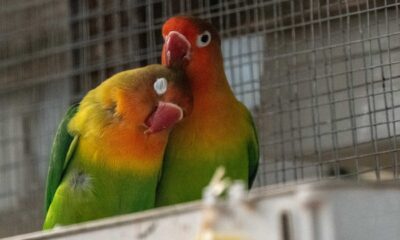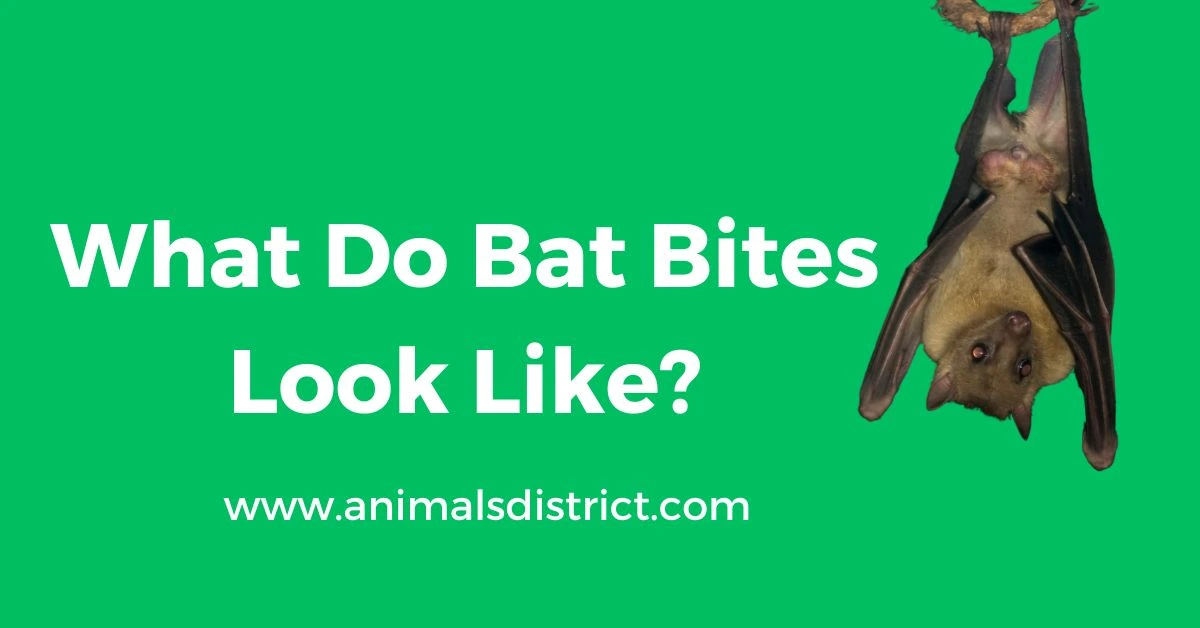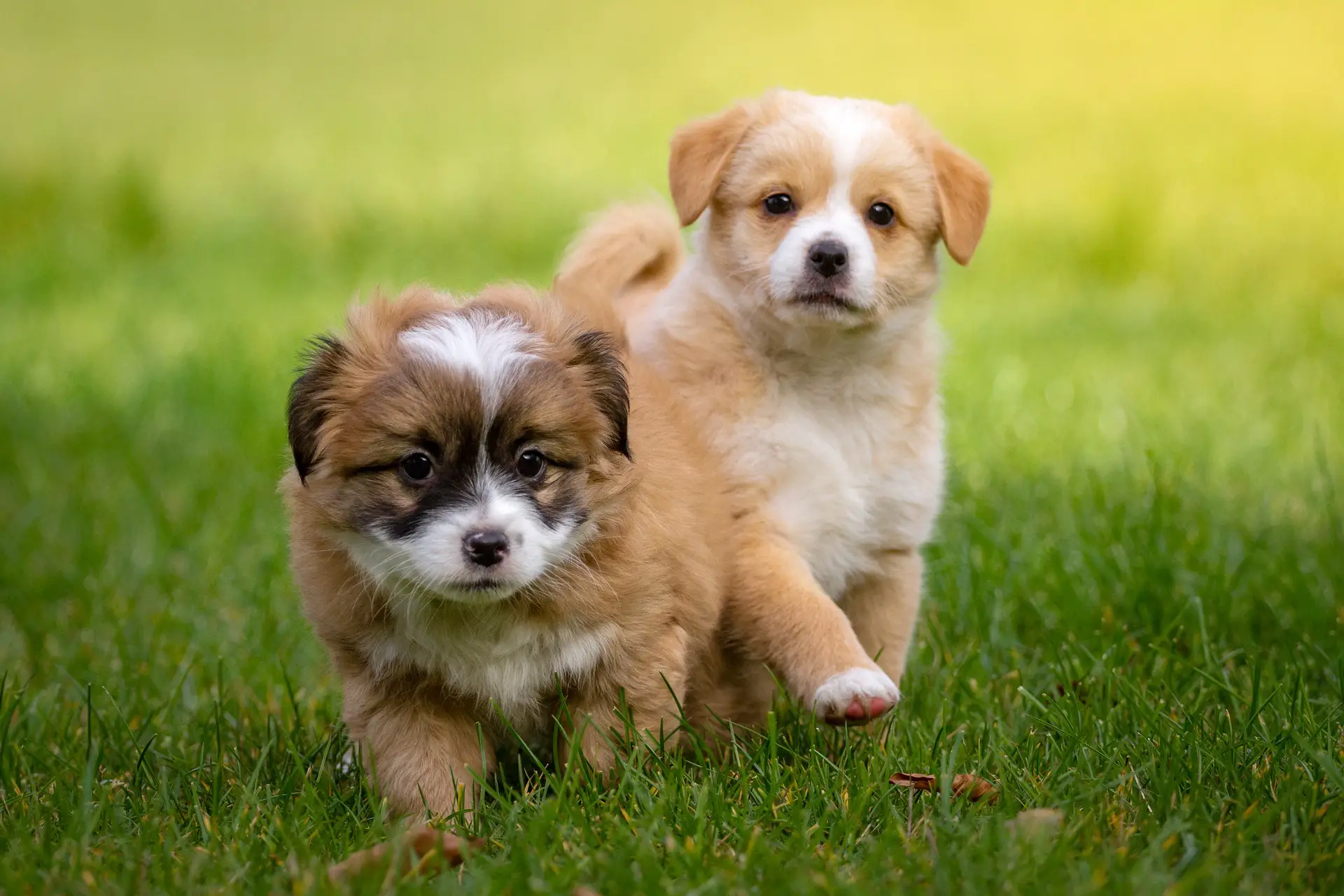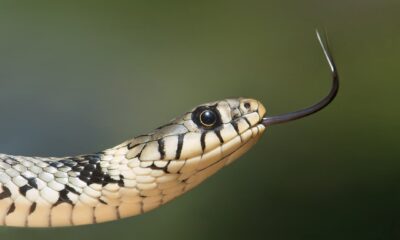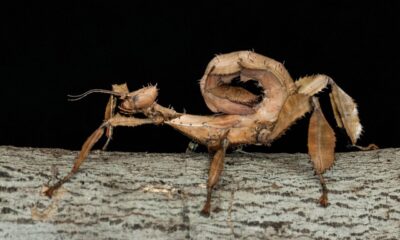Birds
How Long Do Peacocks Live? ALL You Need To Know (2023)

Last Updated on June 30, 2023 by israel olaniran
Peacocks, with their stunning feathers and majestic presence, have captivated human attention for centuries. These fascinating birds, known for their vibrant plumage and elaborate courtship displays, have a lifespan that varies depending on various factors. In this article, we will explore the lifespan of peacocks, the factors that affect their longevity, and how we can ensure their well-being throughout their lives.
Read: how long do squirrels live?
How Long Do Peacocks Live?
The average lifespan of peacocks varies depending on several factors. On average, these magnificent birds live for around 15 to 20 years in the wild. However, with proper care and management, they can live up to 25 years or even longer. It’s important to note that there can be differences in lifespan between male and female peacocks.
| Peacock Species | Lifespan in the Wild | Lifespan in Captivity |
|---|---|---|
| Indian Peafowl | 15-20 years | Up to 25+ years |
| Green Peafowl | 20-25 years | Up to 30+ years |
| Congo Peafowl | 10-15 years | Up to 20+ years |
| Burmese Peafowl | 10-15 years | Up to 20+ years |
| Java Peafowl | 10-15 years | Up to 20+ years |
| White Peafowl | 15-20 years | Up to 25+ years |
Peacock’s Early Life
Peacocks start their lives as small and vulnerable chicks. They hatch from eggs, and the early stages of their development are critical for their survival. During this period, they are highly susceptible to predation and environmental threats. To enhance their chances of survival, peacock chicks often stay close to their mother and seek protection in dense vegetation. As they grow, their survival instincts and ability to evade predators improve.
Read: how long do lizards live?
Factors Affecting Peacock Lifespan
Several factors influence the lifespan of peacocks. Genetic factors play a significant role, as some individuals may inherit certain traits that enhance their longevity. Environmental factors, such as climate conditions and availability of food and water sources, also impact their lifespan. Additionally, peacocks face threats from predators, including wild cats, snakes, and larger birds of prey.
The lifespan of peacocks can be influenced by various factors. Understanding these factors can help us better comprehend their longevity and take appropriate measures to ensure their well-being. Here are some significant factors that affect the lifespan of peacocks:
- Genetics: Genetic factors play a crucial role in determining the lifespan of peacocks. Some individuals may inherit certain genetic traits that contribute to their longevity, while others may be predisposed to health issues that can shorten their lifespan.
- Environment: The environment in which peacocks live has a significant impact on their lifespan. Factors such as climate conditions, availability of food and water sources, and the quality of their habitat can affect their overall health and well-being. Peacocks living in favorable environments with ample resources are more likely to have longer lifespans.
- Predation: Peacocks face threats from predators such as wild cats, snakes, and larger birds of prey. The presence of predators can significantly impact their survival and lifespan. Peacocks that live in areas with a high prevalence of predators may have shorter lifespans due to the constant risk of predation.
- Disease and Health: Like any living organism, peacocks are susceptible to diseases and health issues. Poor health, infections, and untreated illnesses can reduce their lifespan. Regular veterinary care, proper nutrition, and preventive measures against diseases are crucial in ensuring their well-being and longevity.
- Access to Resources: Availability of food, water, and suitable nesting and breeding sites can affect the lifespan of peacocks. Inadequate access to these essential resources can lead to malnutrition, dehydration, and reduced breeding success, impacting their overall health and lifespan.
- Human Interactions: Human activities and interactions can also impact peacock lifespan. Habitat loss due to deforestation, urbanization, and agricultural expansion can disrupt their natural habitats, leading to a decline in population and shorter lifespans. Additionally, illegal wildlife trade and poaching pose significant threats to peacocks and can have severe consequences for their survival.
- Stress and Disturbance: Peacocks can experience stress and disturbance from various sources, including noise pollution, human encroachment, and disruptions to their natural behaviors. Prolonged exposure to stressors can negatively impact their health and lifespan.
- Captive Care: Peacocks kept in captivity, such as in zoos, aviaries, or as pets, can have longer lifespans compared to their wild counterparts. Under controlled conditions, with proper care, nutrition, and veterinary attention, captive peacocks can live well into their 20s and sometimes even longer.
Peacock Lifespan in Captivity
Peacocks kept in captivity, such as in zoos and aviaries, tend to have longer lifespans compared to their wild counterparts. Under controlled conditions, with proper nutrition and veterinary care, peacocks can live well into their 20s and sometimes even longer. The absence of natural predators and the provision of a stable environment contribute to their extended lifespan.
Read: how long do chameleons live?
🐾 Are you a dog owner who wants to ensure your dog gets the absolute best in terms of nutrition?
Peacock Lifespan in the Wild
Peacocks in the wild face numerous challenges that can impact their lifespan. Habitat loss due to deforestation and urbanization has significantly affected their population and longevity. The destruction of their natural habitat reduces their access to food sources and breeding grounds, making them more vulnerable to predation and diseases.
Longest-Lived Peacocks on Record
While the average lifespan of peacocks may be around 15 to 20 years, there have been exceptional cases of peafowl living much longer. These instances often involve peacocks kept in ideal conditions, receiving exceptional care, and protected from predators and environmental hazards. The record for the oldest peacock stands at an impressive 28 years.
Caring for Peacocks to Enhance Lifespan
To ensure peacocks live a long and healthy life, it’s important to provide them with optimal care. Creating a suitable habitat that mimics their natural environment is crucial. This includes providing ample space, appropriate vegetation, and shelter. A well-balanced diet rich in fruits, vegetables, and protein sources is essential for their nutritional needs. Regular veterinary check-ups and preventive measures against diseases are also vital to their well-being.
Final Thoughts On How Long Do Peacocks Live?
Peacocks, with their enchanting beauty and captivating displays, bring joy to our lives. Understanding their lifespan and the factors that influence it allows us to make informed decisions to support their well-being. By protecting their habitats, minimizing threats, and providing proper care, we can contribute to the longevity of these remarkable birds.
FAQs
What is the maximum age of a peacock?
The maximum age of a peacock is generally around 25 years, although there have been exceptional cases of peafowl living beyond that, with the record being 28 years.
How can you tell how old a peacock is?
Determining the exact age of a peacock can be challenging, especially in the wild. However, certain physical characteristics, such as the coloration of the plumage, size, and development of the bird, can provide general indicators of its age.
Do peacocks make good pets?
Peacocks can be kept as pets, but they require specific care and a suitable living environment. They are large birds and need ample space to roam and fly. Additionally, peacocks are loud, have specific dietary requirements, and may not be suitable for everyone as pets.
How long can a peacock fly?
Peacocks are capable of flying, although their flight is usually limited to short distances. They use their wings to escape from predators, travel between roosting sites, or reach higher perches. Their flight capabilities may vary depending on factors such as age, health, and the availability of open space.
Where does the peacock live?
Peacocks are native to South Asia and are primarily found in countries such as India, Sri Lanka, and surrounding regions. They inhabit a variety of habitats, including forests, woodlands, and grasslands. In some areas, they have also been introduced to other parts of the world, including North America and Europe.
What is the lifespan of a white peacock?
White peacocks, which are a color morph of the Indian peafowl, have a similar lifespan to their colored counterparts. On average, they live for around 15 to 20 years in the wild, but with proper care, they can live up to 25 years or more in captivity.
Do peacocks fly?
Yes, peacocks are capable of flying, although their flight is generally limited to short distances. They primarily use their wings for display during courtship rituals and to escape from predators.
What is the lifespan of a male peacock?
Male peacocks, also known as peafowl, have a lifespan similar to female peacocks. On average, they live for around 15 to 20 years in the wild, with some individuals living longer in captivity.
What is the average weight of a peacock?
The weight of a peacock can vary depending on its age, subspecies, and overall health. On average, adult male peacocks can weigh between 4 to 6 kilograms (8.8 to 13.2 pounds), while female peacocks are usually lighter, weighing around 2.75 to 4 kilograms (6 to 8.8 pounds).
What is the oldest peacock on record?
The oldest peacock on record lived for an impressive 28 years. This exceptional case demonstrates the potential for peafowl to live longer with proper care and protection from threats.
What is the family of peacock?
Peacocks belong to the family Phasianidae, which also includes other birds such as pheasants, turkeys, and grouse. This family comprises various species of ground-dwelling birds, many of which are renowned for their elaborate plumage and courtship displays.
Can peacocks live without their colorful feathers?
Yes, peacocks can live without their colorful feathers. The vibrant plumage of male peacocks serves primarily for courtship displays and attracting mates. While the absence of colorful feathers may affect their breeding success, it doesn’t impact their overall lifespan or survival.
Do male and female peacocks have the same lifespan?
In general, male peacocks tend to have slightly shorter lifespans compared to female peacocks. This difference can be attributed to the physiological stresses endured during the elaborate courtship displays and competition for mates.
Are peacocks endangered?
Peacocks are not currently classified as endangered. However, habitat loss, poaching, and illegal wildlife trade pose significant threats to their population. Conservation efforts are crucial to ensuring the long-term survival of these birds.
Can peacocks live in cold climates?
Peacocks are naturally adapted to warm and tropical climates. While they can tolerate mild cold temperatures, prolonged exposure to freezing conditions can be detrimental to their health. Providing adequate shelter and protection from extreme cold is essential if keeping peacocks in colder regions.
Birds
Do Hawks Eat Rabbits? ALL You Need To Know (2023)

Last Updated on July 30, 2023 by israel olaniran
Hawks, the majestic birds of prey, have long captured the fascination of both nature enthusiasts and birdwatchers alike. With their keen eyesight and incredible hunting abilities, they play a vital role in the ecosystem as top-level predators. One question that often arises in discussions about hawks is, “Do hawks eat rabbits?” In this article, we will delve into the intriguing relationship between hawks and rabbits, exploring the dynamics of their interactions in the wild and the significance of their coexistence.
Read: do hawks eat snakes?
Do Hawks Eat Rabbits?
Yes, hawks do eat rabbits. Hawks are formidable birds of prey with keen hunting abilities, and rabbits are among their favored prey. Hawks rely on their sharp vision and aerial prowess to spot, pursue, and capture rabbits, making them an essential part of the predator-prey dynamics in the natural world.
The relationship between hawks and rabbits highlights the delicate balance and ecological significance of such interactions in maintaining healthy ecosystems.

Hawks: Characteristics and Habits
Hawks are raptors belonging to the family Accipitridae. These birds are renowned for their sharp vision, powerful talons, and hooked beaks that enable them to be highly efficient hunters. Hawks exhibit a wide range of sizes and appearances, from the small and agile Sharp-shinned Hawk to the majestic and formidable Red-tailed Hawk. Their hunting behavior is characterized by swift and precise movements as they target their prey from elevated vantage points.
Read: what animals eat hawks?
Rabbits: An Easy Prey
Rabbits, on the other hand, belong to the family Leporidae and are known for their rapid reproductive abilities. They are small herbivorous mammals that inhabit various habitats, from forests to grasslands. Rabbits reproduce quickly, and their population can grow exponentially under favorable conditions. However, they are also vulnerable to predation due to their relatively small size and lack of substantial defensive mechanisms.
Read: how much weight can a hawk carry?
Hawk and Rabbit Interaction in the Wild
The encounter between a hawk and a rabbit in the wild is a testament to the predator-prey relationship. Hawks are equipped with exceptional eyesight that allows them to spot potential prey from great distances. Once a hawk identifies a rabbit as a target, it employs various techniques to capture its meal. The element of surprise is crucial in a successful hunt, and hawks are known for their swift and stealthy approaches when diving towards their unsuspecting prey.
🐾 Are you a dog owner who wants to ensure your dog gets the absolute best in terms of nutrition?
Read: All you need to know about rabbit poop?
Impact of Hawks on Rabbit Population
As apex predators, hawks play a significant role in maintaining the balance of the ecosystem. By preying on rabbits and other small mammals, they help control the population of these species, preventing overpopulation and its subsequent effects on vegetation and other animals. While hawk predation may cause a decline in the rabbit population in certain regions, it ultimately benefits the overall health of the ecosystem.
Coexistence and Survival Strategies
Over time, rabbits have developed various survival strategies to cope with the constant threat of hawk predation. Their keen sense of hearing and speed enable them to detect the approach of hawks and other predators. In addition, rabbits often seek shelter in burrows or dense vegetation to evade capture. Despite being a potential food source for hawks, rabbits’ ability to reproduce rapidly and adapt to their environment helps maintain a healthy prey population for hawks and other predators.
Human Impact and Conservation Efforts
Human intervention can significantly affect the dynamics between hawks and rabbits. Habitat loss and environmental degradation may disrupt the natural balance, leading to population imbalances in both species. Conservation efforts that focus on preserving natural habitats and protecting endangered species are vital in maintaining the delicate ecological relationships between predators like hawks and their prey.
Understanding the Food Chain
The hawk-rabbit interaction highlights the concept of the food chain and trophic levels in an ecosystem. Hawks, as apex predators, occupy the highest trophic level, while rabbits are primary consumers at a lower trophic level. The interdependence of these levels ensures the stability and functioning of the entire ecosystem.
Fascinating Facts about Hawks and Rabbits
Before concluding, let’s explore some interesting trivia about hawks and rabbits. Did you know that some hawks are migratory, covering thousands of miles during their seasonal movements? On the other hand, rabbits are known for their remarkable agility, capable of reaching speeds of up to 35 miles per hour to escape predators.
Final Thoughts On Do Hawks Eat Rabbits?
In conclusion, the question “Do hawks eat rabbits?” reveals a captivating tale of predator-prey dynamics in the natural world. Hawks, with their prowess and precision, contribute to the ecological balance by controlling rabbit populations and other small mammals. At the same time, rabbits’ adaptability and reproductive abilities enable them to coexist with their aerial predators. Understanding and appreciating these complex relationships are crucial for promoting conservation efforts and safeguarding the delicate harmony of our ecosystems.
Are all hawks carnivorous?
While the majority of hawks are carnivorous and primarily feed on small mammals and birds, some hawks have adapted to consume a more varied diet, including insects and reptiles.
Do hawks only eat live prey?
Hawks are indeed carnivores and primarily hunt live prey. However, they may occasionally scavenge on carrion when live prey is scarce.
Can rabbits defend themselves from hawks?
Rabbits rely on their agility and evasive skills to avoid predation. While they can’t physically defend themselves against hawks, their speed and ability to take cover serve as their primary defense mechanisms.
How fast can a hawk swoop down to catch a rabbit?
Hawks are incredibly fast and can reach speeds of up to 120 miles per hour during their dives or swoops to catch prey
What is the lifespan of hawks and rabbits?
The lifespan of hawks and rabbits can vary depending on the species and their living conditions. Hawks generally live around 10 to 20 years, while rabbits in the wild have an average lifespan of about 1 to 2 years due to various predators and environmental factors.
Do eagles eat rabbits?
Yes, eagles are also birds of prey, and like hawks, they have a carnivorous diet that includes rabbits and other small mammals as part of their pr
What animal eats rabbits?
Several predators eat rabbits, including hawks, eagles, owls, foxes, coyotes, bobcats, and even larger snakes and some species of weasels.
Can snakes eat rabbits?
yes, some larger snake species, such as certain constrictors, can consume rabbits as part of their diet.
How do hawks kill rabbits?
Hawks use their sharp talons to grasp and immobilize their prey, including rabbits. They may deliver a swift strike from the air or pounce on rabbits from elevated perches.
Do hawks eat snakes?
Yes, some hawk species do eat snakes. Snakes are another prey item for certain types of hawks.
Do hawks eat birds?
Yes, birds are a common part of a hawk’s diet. Hawks are skilled hunters and can catch other birds during flight.
Do hawks eat grasshoppers?
While hawks primarily prey on small mammals and birds, they may also consume insects like grasshoppers occasionally, especially during times of food scarcity.
Do hawks eat squirrels?
Yes, squirrels are a part of a hawk’s diet, and some hawk species are adept at catching squirrels in trees and on the ground.
Do hawks eat small dogs?
While it is rare, some large hawk species could potentially target small dogs as prey, though it is not a common occurrence. Small dogs are generally not a primary target for hawks.
-
Domestic Animals2 years ago
Why Do Dogs Look Away When You Eat
-
Domestic Animals6 months ago
Small But Smart: 10 Most Intelligent Small Dog Breeds
-
Wild Animals2 years ago
What Does Snake Poop Look Like? PICTURES & VIDEOS
-
Pet News6 months ago
Trending Now: Woman Raised A Panther Thinking It Was A Cat.
-
Domestic Animals8 months ago
Why Does My Cat Sleep On My Feet? Best Reasons
-
Insects7 months ago
Australian Stick Bug: ALL You Need To Know.
-
Domestic Animals1 year ago
Can Guinea Pigs Eat Oranges? ALL You Need To Know!
-
Domestic Animals2 years ago
Can Guinea Pigs Eat Pears? All You Need To Know (2023)



